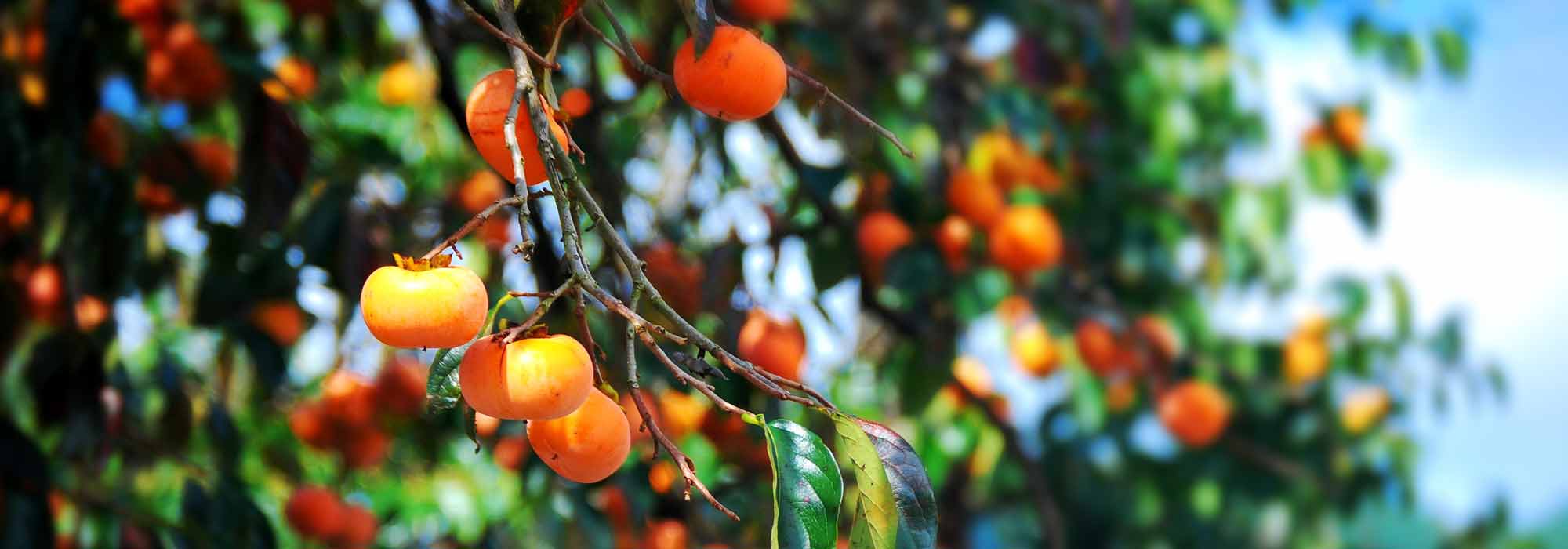
Persimmon or kaki: sowing, growing and harvest
Contents
The persimmon in a nutshell
- The persimmon is a fruit tree, perennial and hardy, ideal for Mediterranean regions.
- A highly ornamental tree, its deciduous, broad and ovate leaves turn a stunning red in autumn.
- Its fruits, rich in vitamins and trace elements, known as persimmons or kaki, are eaten raw with a spoon and offer a multitude of culinary uses.
- Male or female, the genus of the persimmon can be determined by its solitary flowers or those gathered in cut flower arrangements.
- Once well established, it requires little maintenance and withstands frosts of around -15 to -18°C.
A word from our expert
The persimmon tree, Diospyros kaki, is a fruit tree cultivated for its fruits, the persimmons. Very rich in vitamins, they offer a tender flesh when fully ripe, with a sweet and sugary flavour. They are generally consumed raw when fully ripe. The persimmon is a highly valued fruit in the Far East, where it originates.
The persimmon tree thrives in a sunny location, sheltered from cold winds. It particularly enjoys Mediterranean climates. Hardy, it is capable of withstanding negative temperatures down to -18°C. The persimmon adapts to all types of soil, although it prefers rich, deep, humus-bearing, and well-drained soils.
Some varieties need to be fertilised to develop into fruits, so the proximity of a female and a male tree is necessary. Others produce fruits without pollination, through parthenocarpy. In this case, the fruits are “aspermous,” meaning they contain no seeds. The best varieties require pollination to produce the persimmons, which are harvested from December to February, or in autumn depending on the variety.
Once well established, the persimmon requires little maintenance, apart from annual pruning. However, its sowing is quite complex to achieve, and propagation by cuttings is practically impossible to succeed.
Description and Botany
Botanical data
- Latin name Diospyros kaki
- Family Ebenaceae
- Common name persimmon, kaki, persimmon tree
- Flowering mid-May to July
- Height up to 15 m (6 to 10 m on average)
- Sun exposure sunny and warm
- Soil type rich, deep, humus-bearing, and well-drained
- Hardiness -15°C to 18°C
The persimmon, Diospyros kaki, also known as the persimmon tree or kaki, is a tree native to the Far East belonging to the Ebenaceae family. The kaki is the preferred fruit in many Asian countries, particularly in China, Korea, and Japan. It is usually consumed raw when fully ripe (it is astringent when young) and is sometimes used in cooked recipes.
The persimmon is a bush that averages between 6 and 10 m in height, although some varieties can reach up to 15 m. Its branches are adorned with deciduous leaves, broad and ovate, whose colour changes with the seasons. Their green hue turns a beautiful red in autumn.
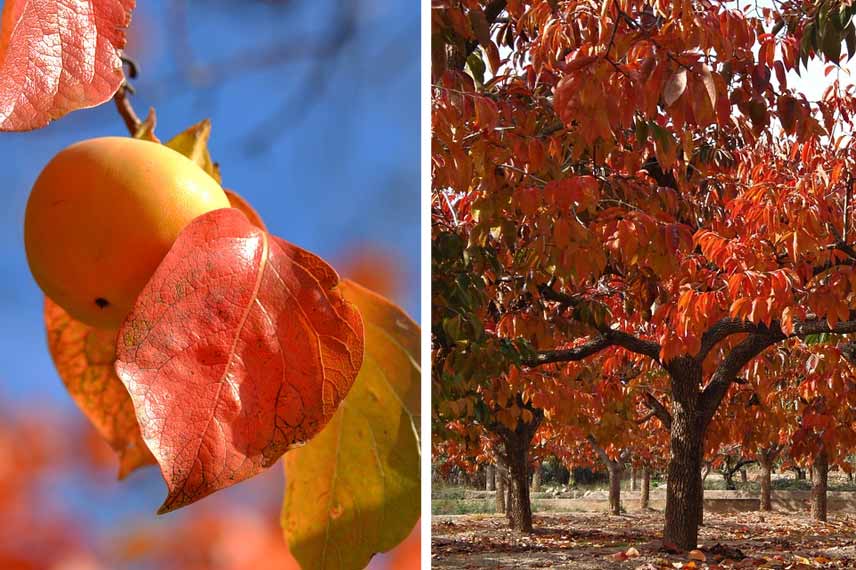
The male or female gender of Diospyros kaki can be determined by its flowers. This flowering occurs from mid-May to July.
Female flowers are solitary and larger than male flowers. They have either 4 sepals and 4 petals or 5 sepals and 4 petals, and display a cream colour, between white and yellow.
Male flowers cluster in bouquets on thick stems. They are smaller than female flowers and have a cream, yellow, or green colour.
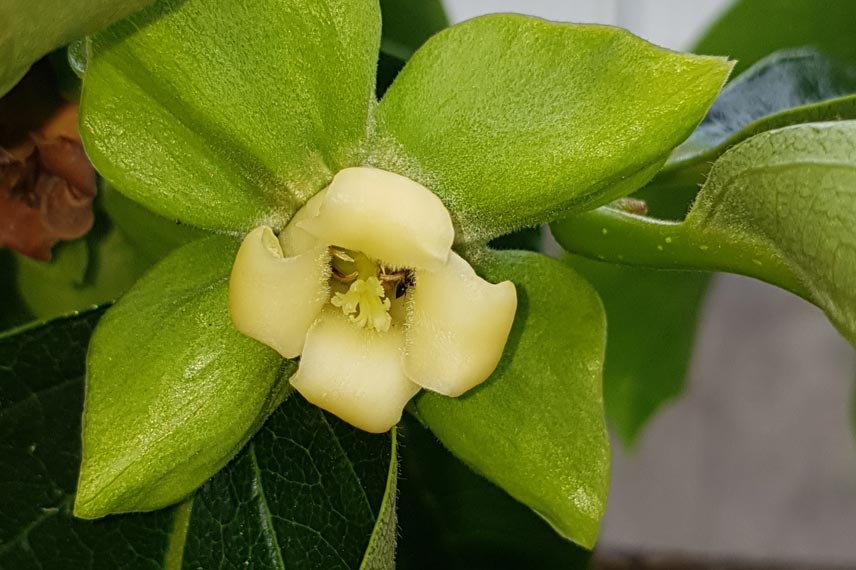
Female flower of persimmon tree
The persimmon is a fruit tree that produces fruits called kakis, or persimmons. These appear following the pollination of the flowers, facilitated by the proximity of a female and a male plant. However, some varieties produce their fruits through parthenocarpy or self-fertilization. The fruits obtained then have no seeds.
Round to oval in shape, the persimmon can weigh up to 500 grams. The kaki is covered with a translucent skin that is initially green, turning orange as it ripens.
Its seeds vary in size depending on the variety, measuring 2, 3, or 5 centimetres.
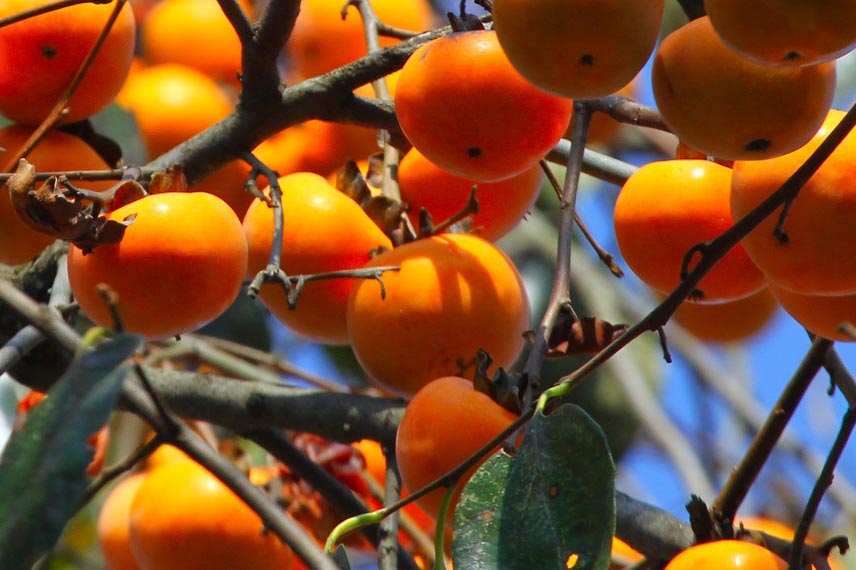
The persimmon is a fruit rich in vitamins (provitamin A, iron, and vitamin C) and trace elements (carotenoids, lycopenes, xanthines). Low in calories, the kaki is also quite rich in fibre, which enhances its satiating properties.
Main species and varieties
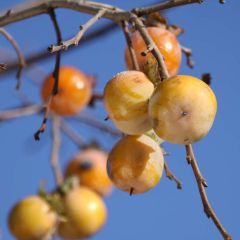
Diospyros virginiana SAA Pieper - Virginia Persimmon
- Flowering time June, July
- Height at maturity 8 m
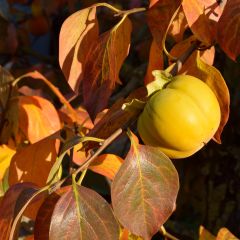
Diospyros kaki
- Flowering time June, July
- Height at maturity 6 m
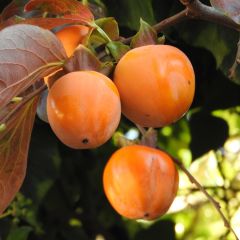
Diospyros kaki Costata - Persimmon
- Flowering time June, July
- Height at maturity 8 m
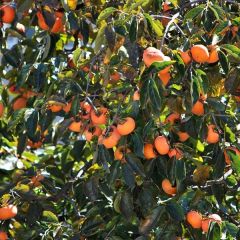
Diospyros kaki Fuyu - Persimmon
- Flowering time June, July
- Height at maturity 7 m
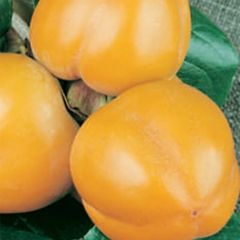
Diospyros kaki Muscat - Persimmon
- Flowering time June, July
- Height at maturity 8 m
Discover other Persimmon trees - Diospyros
View all →Available in 2 sizes

Available in 2 sizes

Available in 2 sizes
Available in 1 sizes
Available in 1 sizes
Available in 2 sizes
Available in 1 sizes
Available in 1 sizes
Available in 1 sizes
Available in 1 sizes
Sowing the persimmon tree
The fruits of the persimmon tree do not always contain seeds, especially if the tree has self-fertilised. These are, however, common if the fruits have been obtained through pollination.
It is therefore possible to propagate the persimmon tree by sowing, but this method is not always guaranteed. To increase your chances of success, you will need to stratify your persimmon seeds.
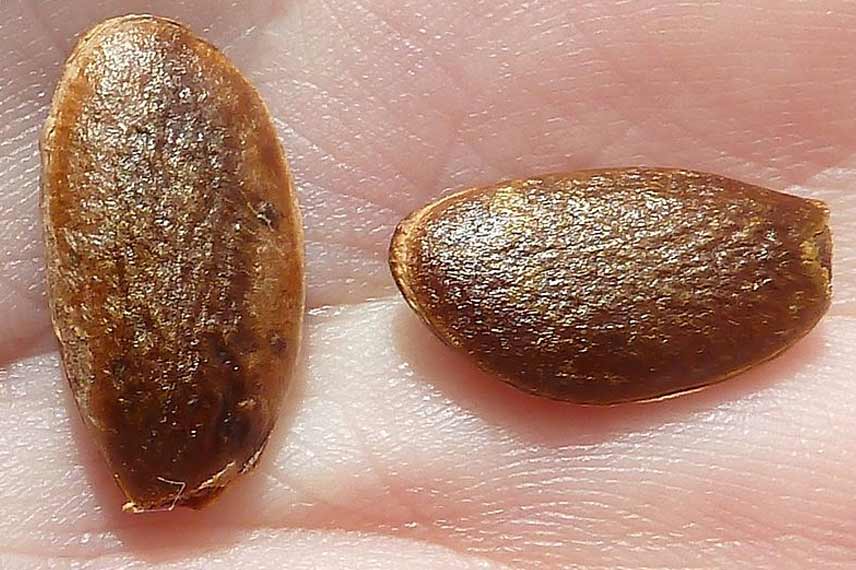
Persimmon seeds Diospyros kaki cv. Persimon ©Philmarin
Activating persimmon seeds
Cold stratification (between 3 and 5°C) of the seeds is essential to increase their germination capacity. Spring sowing will thus be possible after a stratification period of 4 months. This process weakens the outer seed coat to prepare it for germination.
Stratifying persimmon seeds in the garden
- Prepare a homogeneous mixture of river sand and turf.
- Fill a pot with a drainage hole one-third full.
- Place a few seeds in it.
- Add another layer of substrate.
- Place a few more persimmon seeds on top.
- Repeat the process without exceeding 4 layers.
- Bury the pot level with the ground, against a north-facing wall and little exposed to rainwater.
- In case of a dry winter, ensure to maintain humidity by lightly watering if necessary.
Stratifying persimmon seeds in the refrigerator
This method is reserved for regions where mild winters are not sufficiently rigorous to stratify persimmon seeds.
- Fill a freezer bag with sand.
- Place the seeds in it.
- Moisten the sand and seal the bag tightly.
- Place it in the vegetable drawer of the refrigerator.
- The sand must remain moist throughout the process.
Note: if you notice a slight smell of alcohol coming from the bag, stir the mixture and leave it open for a few minutes before placing it back in the refrigerator.
Sowing persimmons
When to sow persimmons?
Sowing persimmons takes place in spring (March to April) or in autumn (September to October) after a 4-month seed stratification period.
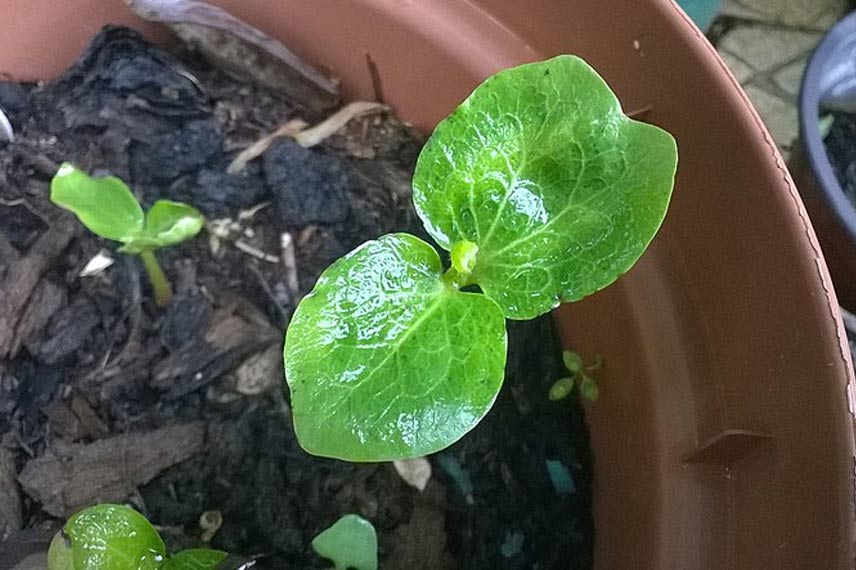
Sowing persimmons ©Eiku
How to sow persimmons?
- Start by preparing a mixture composed of 2/3 turf to 1/3 sand.
- Moisten the substrate without soaking it.
- Place the mixture in a zip bag, about 5 cm thick.
- Sow the seeds at mid-depth before sealing the bag tightly.
- Place the bag on a glass plate exposed to a natural light source.
- The ambient temperature should be 25°C.
- Transplant into pots when the roots appear.
Transplanting persimmon seeds into pots
- Fill the pots with a mixture composed of 2/3 potting soil and 1/3 turf.
- Dig a small hole and place the seeds in it with some of their sandy mixture.
- Cover with potting soil and water.
- Keep the seedlings indoors.
- Plant in the garden when the seedling reaches 10 to 15 cm in height.
Planting Persimmon
Where to plant the persimmon tree?
The Chinese persimmon can be planted in various situations:
- installed in the orchard,
- grown as a specimen tree in the middle of a lawn,
- or at the back of a flower bed.
The chosen space must be well sheltered from the wind and offer a very sunny exposure. A hardy tree, the persimmon can withstand temperatures close to -18°C. However, it needs strong heat during the summer to thrive, which is why it is most often found in Mediterranean regions.
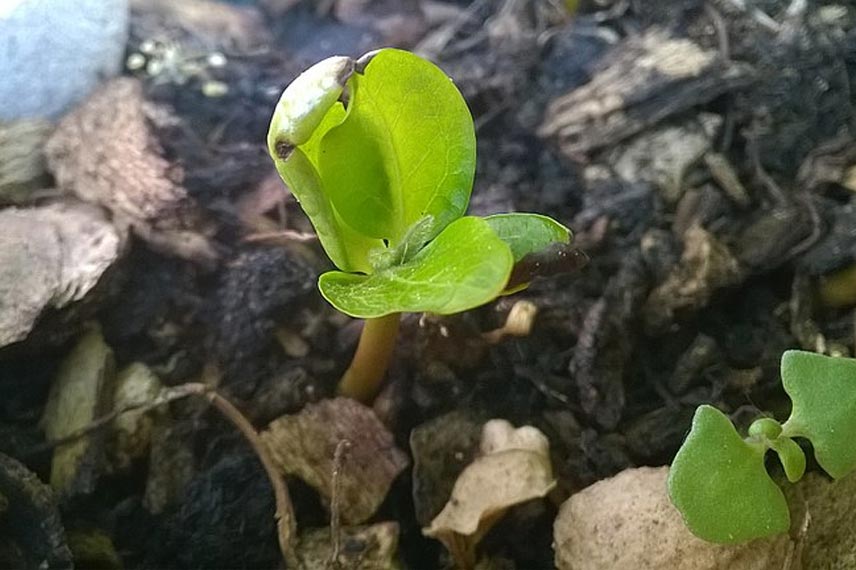
Young persimmon shoot ©Eiku
When to plant the persimmon tree?
The persimmon tree is preferably planted in autumn, but planting can also occur in winter, outside of frost periods. Planting can also take place in spring, provided the tree receives regular watering.
How to plant the persimmon tree?
The persimmon tree appreciates all types of soil, although it prefers rich, well-drained, and slightly acidic soils.
- Start by digging a hole that is 3 to 4 times larger than the root ball.
- Be careful to separate the subsoil from the topsoil into two distinct piles.
- Mix the subsoil with crushed horn and well-matured compost.
- Pour the mixture into the planting hole.
- Install a stake.
- Soak the root ball in water for a few moments, then place it in the hole without burying the collar.
- Cover with the topsoil.
- Firm the soil and create a basin around the base before watering thoroughly.
- Water regularly during the first year following planting, especially during hot weather.
Note: if you need to plant several persimmons in the garden, be sure to space them 5 to 7 m apart in all directions.
Maintenance and care of the persimmon tree
Maintaining the Persimmon Tree
Every spring, remember to add well-rotted compost to your persimmon tree, scratching it into the surface while being careful not to damage its roots.
During the first year after planting, ensure you water the persimmon tree every 2 to 3 days once the rains start to decrease, from spring to summer.
The Chinese persimmon is a tree that is not very susceptible to diseases and pests. Therefore, it does not require any special treatment to protect it.
Pruning the Persimmon Tree
Shaping pruning helps to structure the young persimmon tree. Here, dead branches are removed, as well as branches growing towards the inside of the tree. The persimmon can withstand significant pruning due to its good ability to develop new shoots on large diameter branches. Pruning helps to promote good air circulation within the tree, and to strengthen the bearing branches.
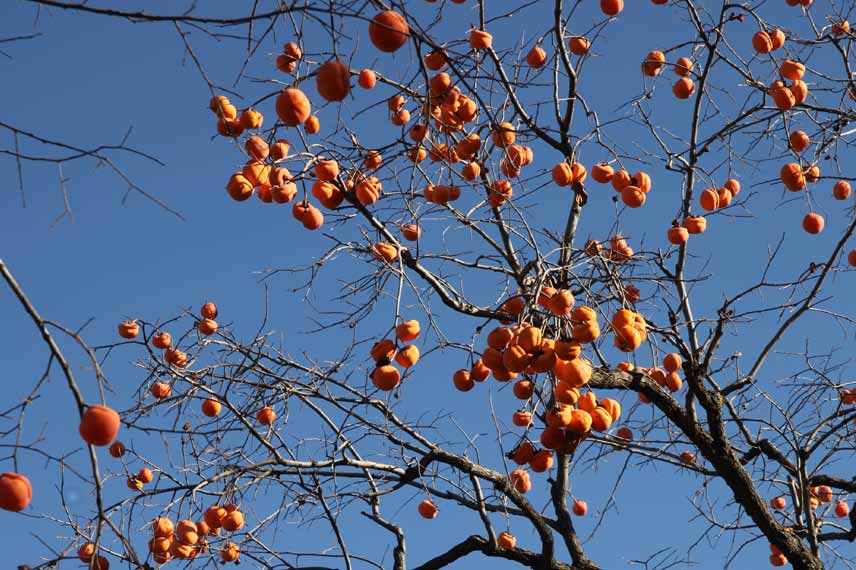
When to Prune the Persimmon?
Pruning is done approximately every two years, during or just after the harvest, which is from December to February for most varieties. Early persimmons are pruned at the end of autumn, always depending on the harvest.
How to Prune the Persimmon Tree?
- Cut the main branches below an eye, 1m from the trunk.
- Remove recent branches that have appeared on the trunk.
- Remove branches that grow towards the inside.
Harvest, consumption, and virtues
When to Harvest Persimmons?
The harvest of persimmons depends directly on their variety. Indeed, while most of them allow for a winter harvest (December to February), early varieties are ready to be harvested in autumn (November).
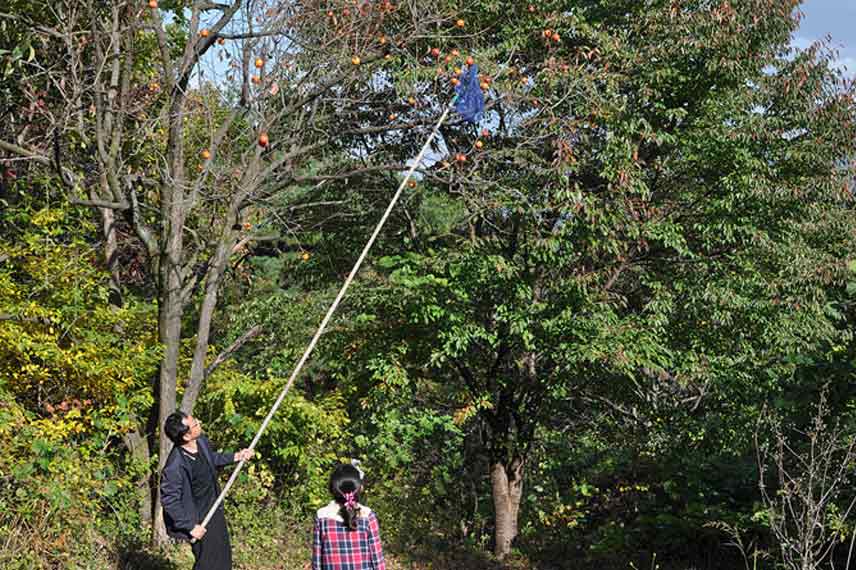
©Kim, Hyun-tae
How to Consume Persimmons?
Persimmons are harvested when the epidermis of the fruit loses its green colour and turns orange. However, consumption only occurs later when the persimmon has sufficiently ripened.
Indeed, the fruit is astringent if consumed too quickly, without a sufficient ripening period. So keep in mind that a nearly over-ripe persimmon is a persimmon ready to be consumed.
Good to know: persimmons do not fall from the tree on their own, even when they have reached maturity. As the fruits are fragile once ripe, it is better to pick them early and store them wrapped in paper, well protected from insects and light, to allow them to gently reach their ripeness.
→ Read also: How to Harvest and Store Persimmons?
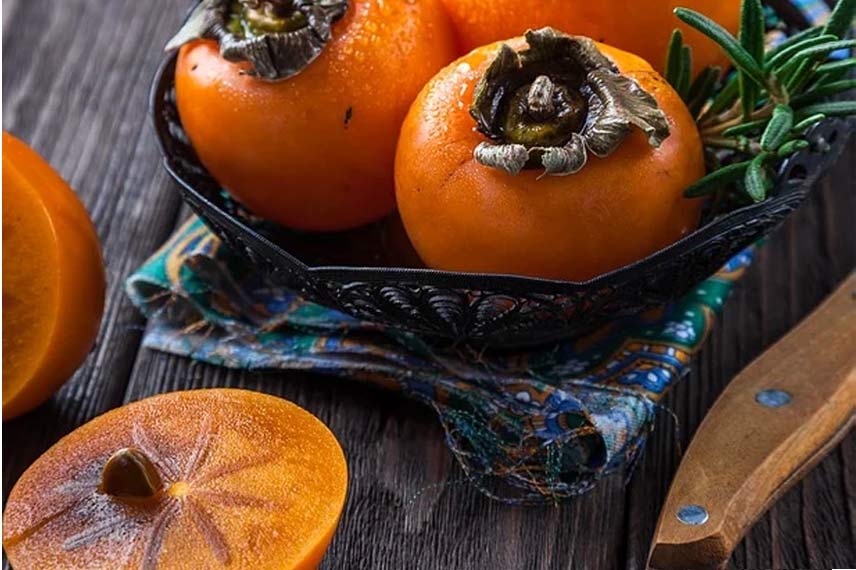
Ripe fruits have a soft, sweet, and tender flesh, whose consistency is reminiscent of apricot jam. Persimmons are eaten fresh, using a small spoon, with or without fresh cream.
They are sometimes sliced to be then dried. In Japan, the whole fruit is actually dried after soaking in alcohol. Prepared this way, the persimmon is used to make wine or fermented persimmon vinegar.
Persimmons are also a fruit that is perfect for making winter jams, as well as compotes, jellies, marmalades, coulis and chutneys. In this last form, persimmons pair perfectly with meats.
Persimmons also integrate well into baking, in the form of ice creams or sorbets, as well as in syrups, cheesecakes, cakes, and other pastries and tarts.
The Medicinal Properties of Persimmons
As we have seen earlier, persimmons are rich in vitamins and minerals. Recent studies have highlighted their effects on thyroid hypertrophy.
Chinese pharmacopoeia uses their astringent, diuretic, expectorant, laxative, and stomachic properties to relieve canker sores, abscesses, and boils. The calyx benefits from demulcent properties. It is thus prescribed in decoction to treat nausea, vomiting, and hiccups. Persimmons are notably included in the composition of cough lozenges.
The young leaves of the persimmon tree are rich in vitamins B and C, and are said to have antibacterial properties. Traditional Chinese medicine uses them dried and powdered in infusions to strengthen the venous system and treat high blood pressure. The juice from the green fruits of the persimmon tree is also used against high blood pressure.
Diseases and potential pests
The persimmon is a bush more or less sensitive to collar gall, which is caused by the bacterium Agrobacterium tumefaciens. It is also susceptible to rust.
On the pest side, the persimmon tree is vulnerable to attacks from mealybugs.
→ Learn more about the diseases and pests of the persimmon in our advice sheet!
Persimmon propagation
As we have seen previously, the persimmon is propagated by sowing seeds in spring. It can also be propagated by grafting. Since they are not always true to the expected variety of the tree, sowings are sometimes reserved for the production of rootstocks.
The grafting of persimmon is done “by cleft” or “by shield”. The best rootstock is the American persimmon, Diospyros Virginiana, grown from seed.
While it is not impossible, propagation by cuttings of the persimmon is extremely difficult and its success rate is low.
Pairing Persimmon
The persimmon can be planted in an orchard, a free hedge, or alongside other fruit trees such as the Texas almond, the William’s Bon Chrétien pear, the Goji – Lycium barbarum, and the Nashi Shinseiki – Pyrus pyrifolia.
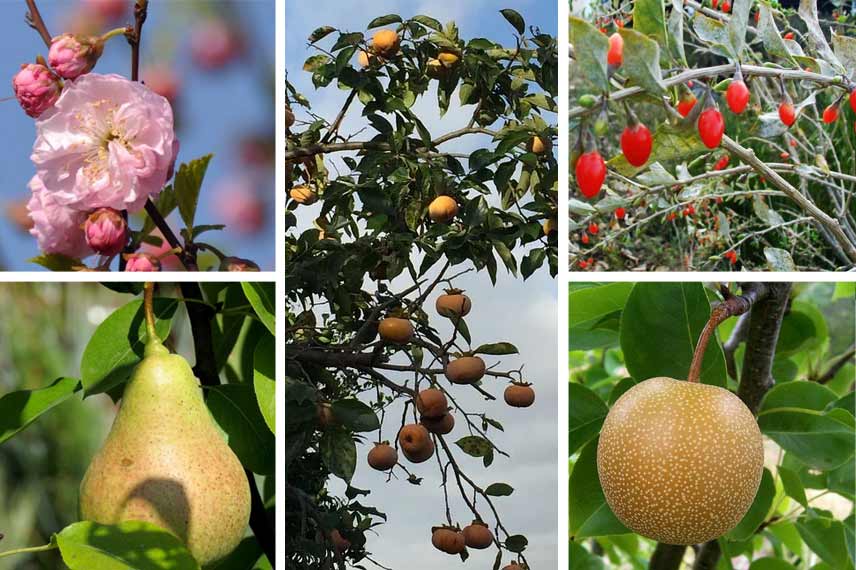
For further reading
- Discover all our varieties of persimmon trees to plant in the garden.
- Also find all our planting and maintenance tips for persimmon trees.
- Create your orchard by choosing your varieties based on the climate and the size of your garden.
- Also discover how to protect your orchard naturally.
- Check out our video tips on persimmon trees.
- Learn more about making dried persimmons.
- Everything you need to know about planting, pruning, and maintaining persimmons.
- Advice sheet: Hoshigaki or dried persimmon.
- Video: Persimmon tree.
- Discover how to choose the right variety of persimmon tree and the best persimmon varieties.
- Why is my persimmon not fruiting? Find our tips to help your persimmon produce beautiful fruit.
- Also listen to our podcast on persimmons: cultivation, harvest, and delicious ideas:
“`html “`
- Subscribe!
- Contents
































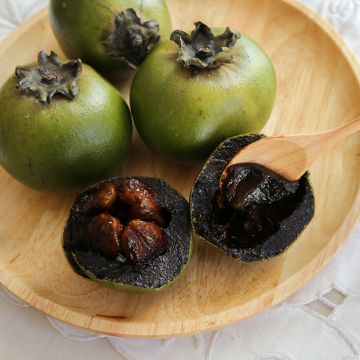
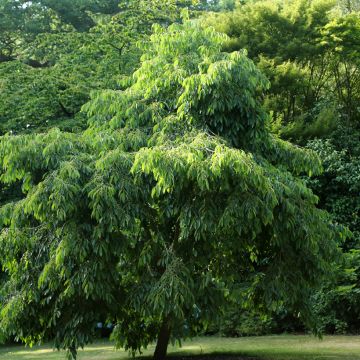
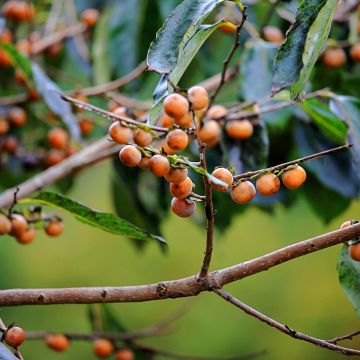
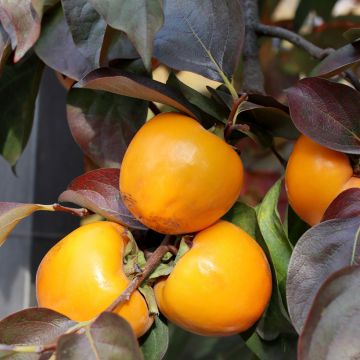
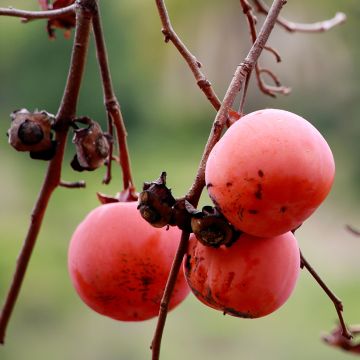
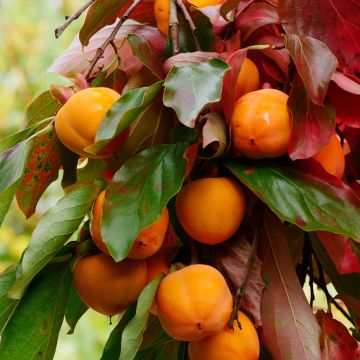
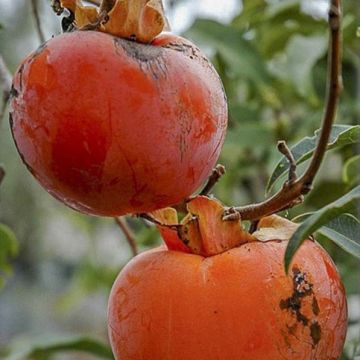
Comments